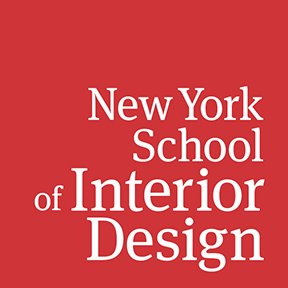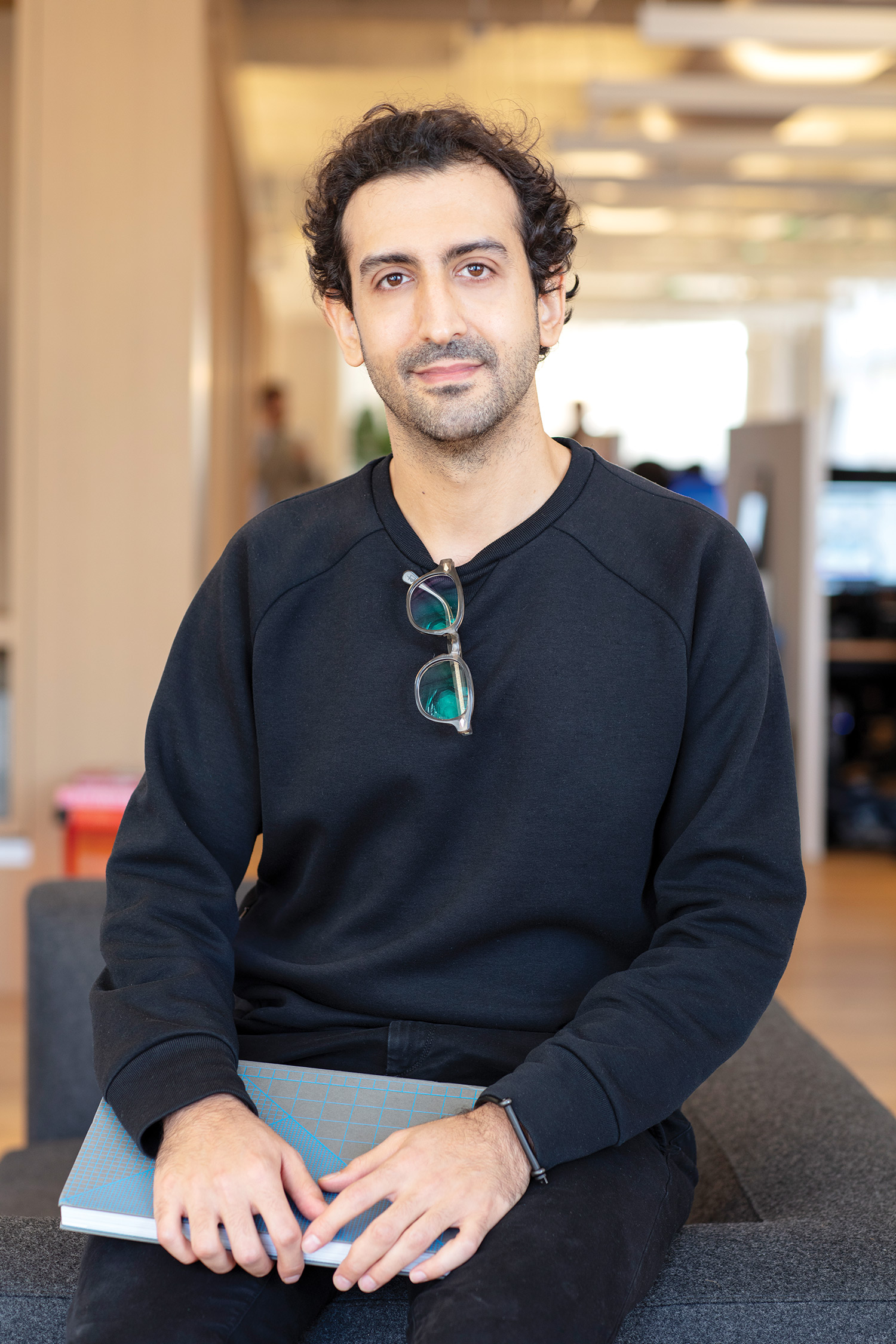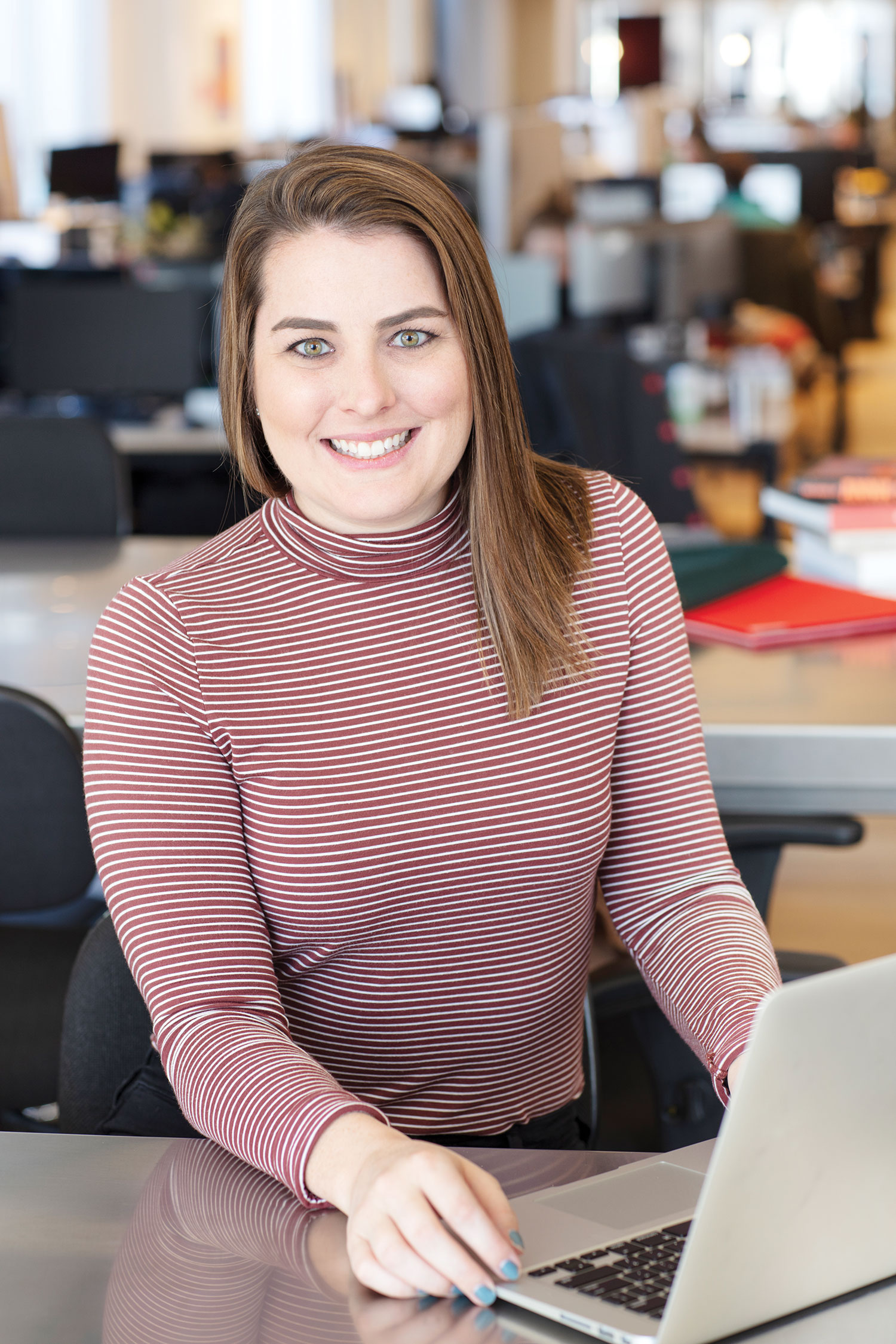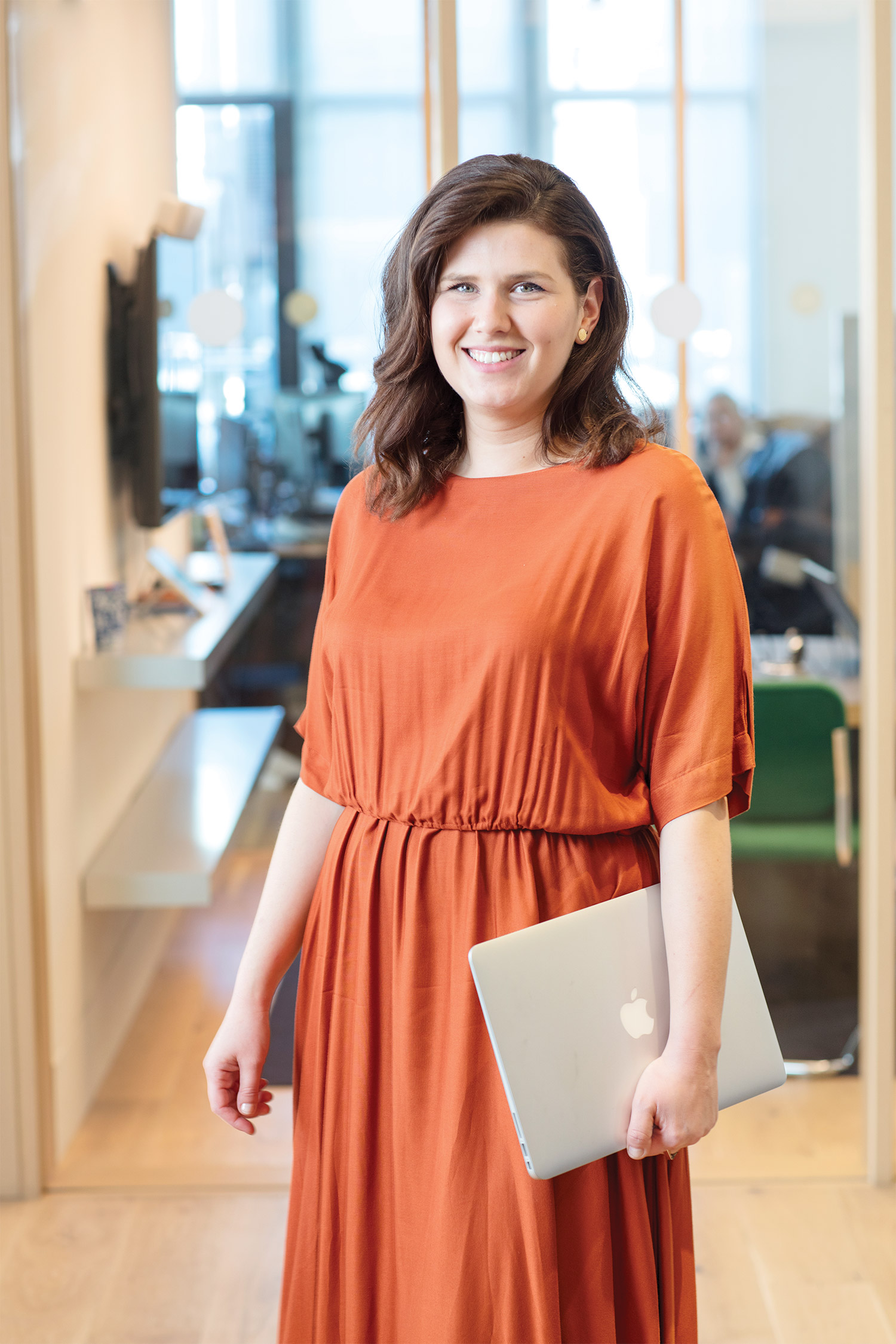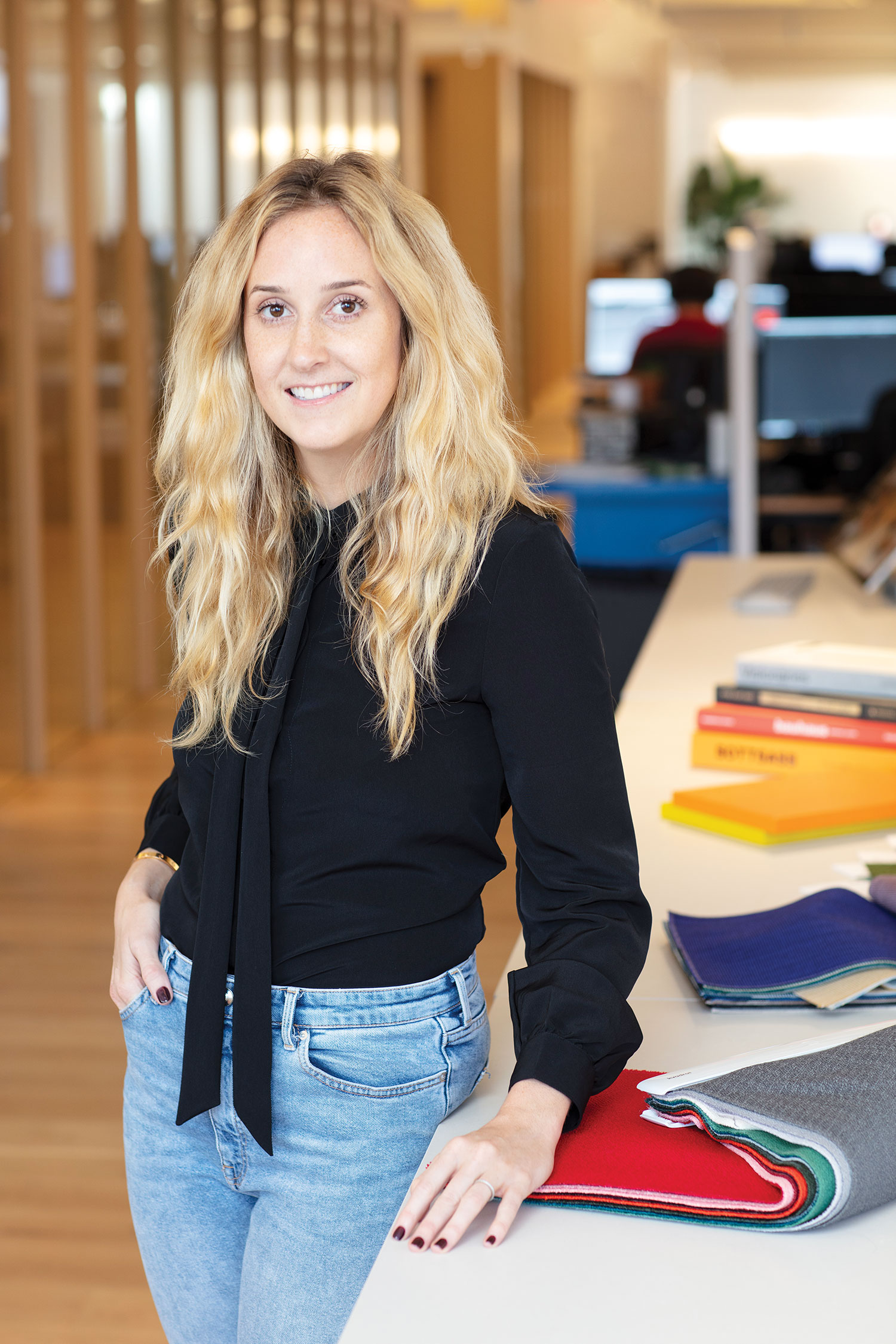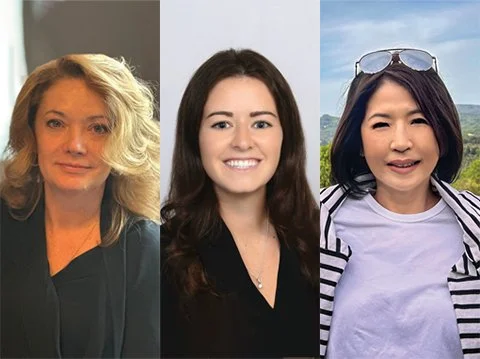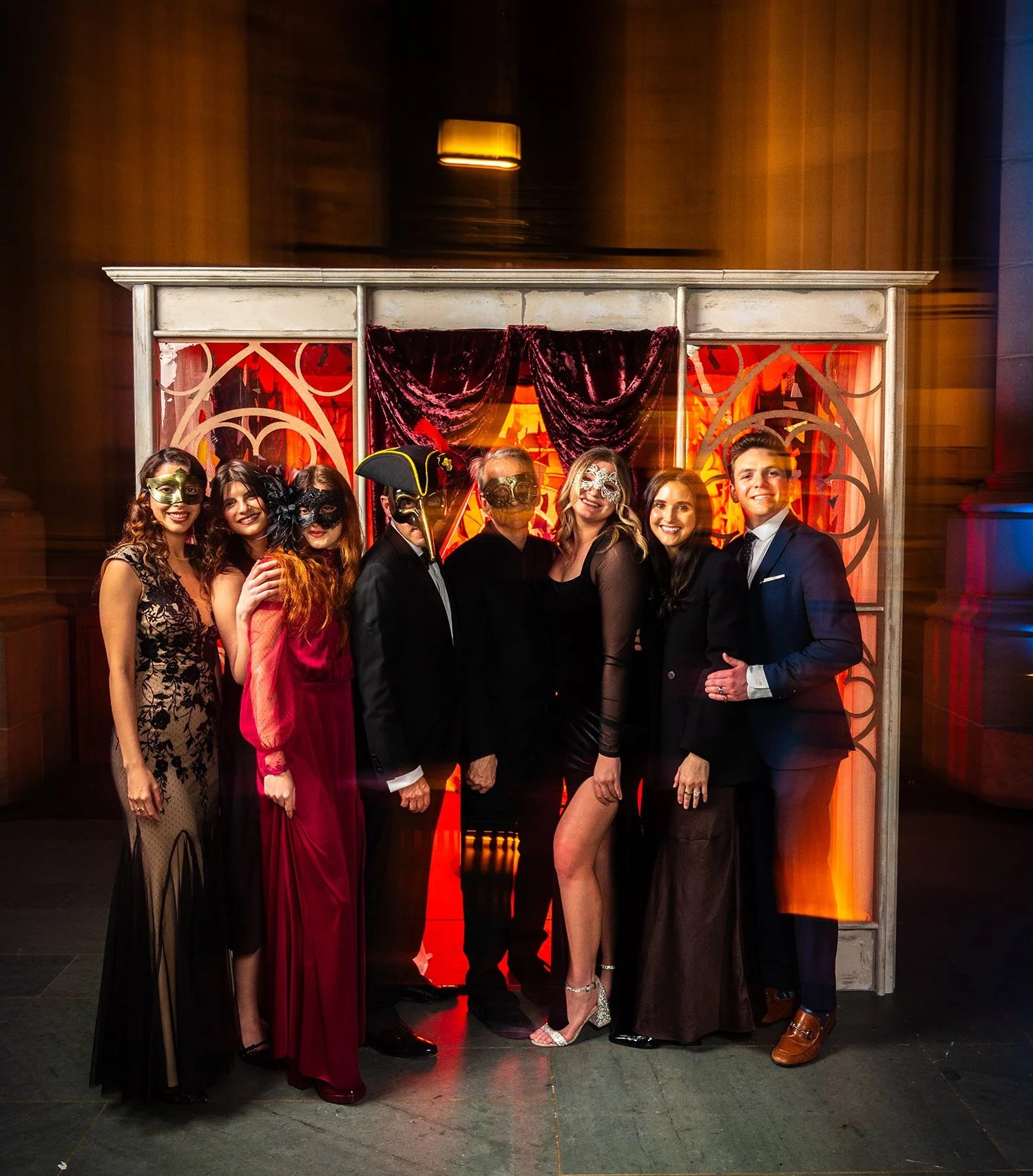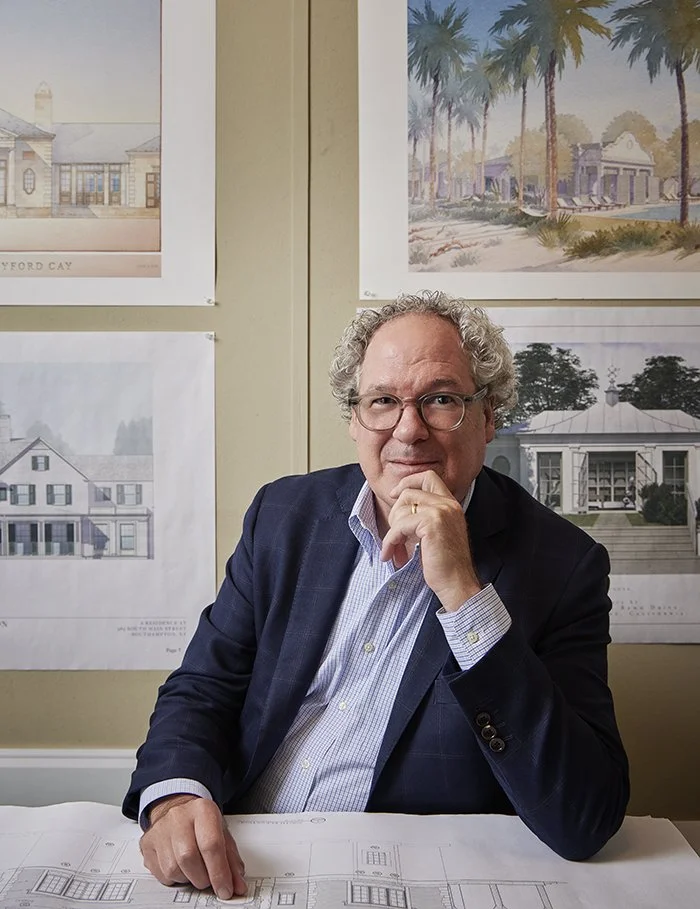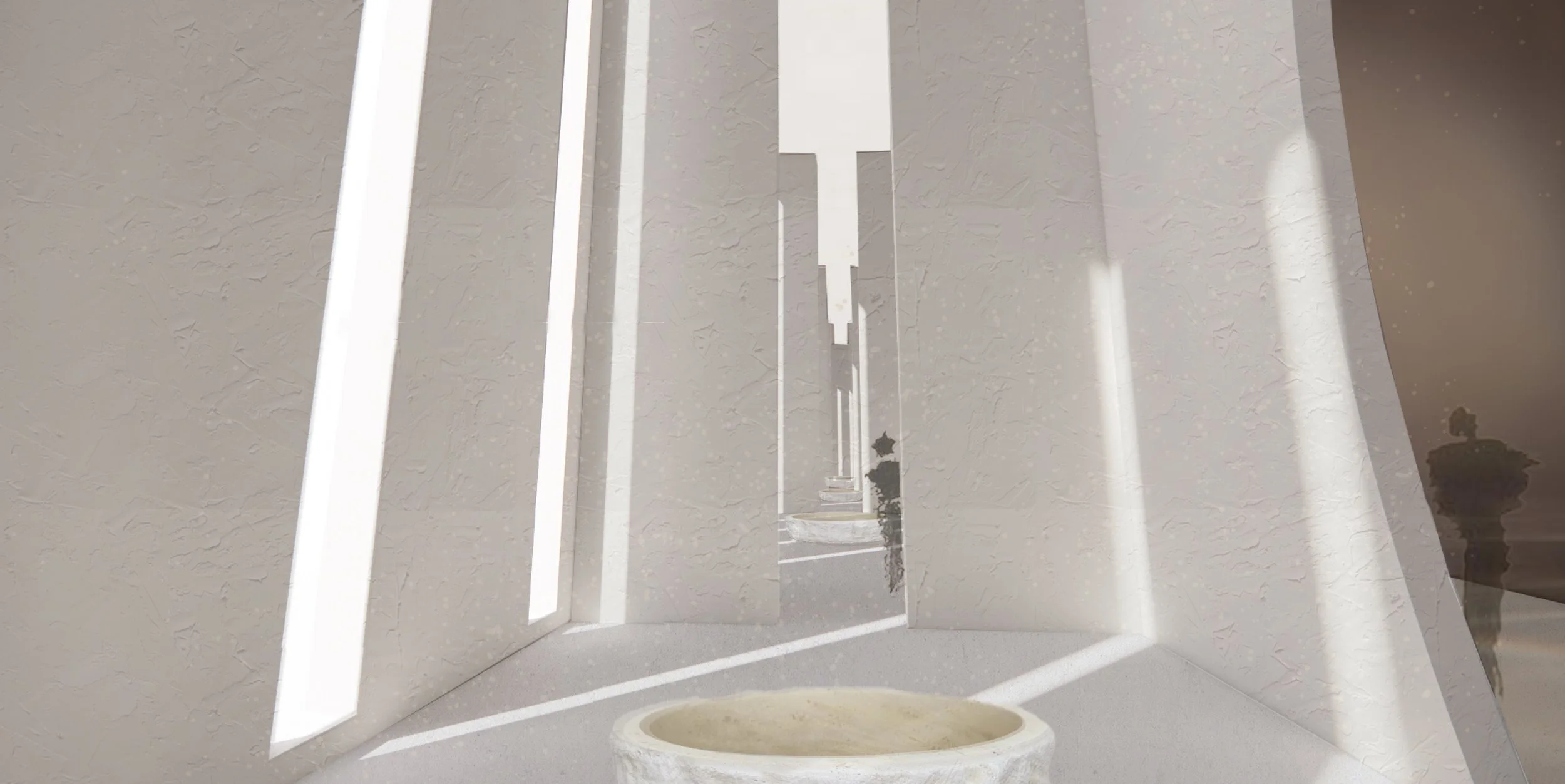We Work at WeWork
Adaptability Gives NYSID Alumni an Edge
"NYSID prepared me to create a spatial experience, rather than just apply materials to surfaces."
—Matthew Giampietro ’14 (MFA-1)
When you walk into the third-floor common area of WeWork’s new 135 West 41st Street facility, designed by alumnus Matthew Giampietro ’14 (MFA-1), you’ll find what he calls “four levels of seating.” There are soft furnishings covered in sumptuous fabrics, upright seats near power outlets, intimate nooks set inside birch plywood enclosures for small group collaboration, and banquettes for single workers, strategically placed next to a very social pantry stocked with coffee and fruit water. You’re likely to see someone working with shoes off, tucked in a comfy chair, or you might see a dog curled at his owner’s feet. Giampietro, whom WeWork recently promoted to the role of Interior Design Lead, US East, Tri-State, says, “I pay attention to book selection in my designs. . . When I put a coffee-table book down on a table, I want to make sure it’s something people are going to talk about. [We design] collision points, places, and opportunities for people to interact.”
NYSID alumni at the WeWork headquarters in Chelsea, New York City. L to R: Catherine Ward ’15 (MFA-1), Matthew Giampietro ’14 (MFA-1), Ilona Birnberg ’09 (BFA), and Alicia Cargo ’16 (MFA-1). Photo: Matthew Septimus
This WeWork space (among the 287 and counting that have cropped up in 77 cities) encapsulates the way the company has revolutionized the field of workplace design since its founding in 2010. WeWork has popularized the credo “make a life, not just a living” at work and the notion that the workplace should offer the comforts of home, and a sense of community to boot. The company is pushing the practice of evidence-based design forward, with a dedicated workplace research and strategy team that uses their own app to gather data from WeWork members on what makes people happy and collaborative in the work environment.
There are currently four NYSID alumni working on the US Design Team of WeWork: Ilona Birnberg ’09 (BFA), Interior Design Manager, US West; Alicia Cargo ’16 (MFA-1), Interior Design Lead, Powered by We; Matthew Giampietro ’14 (MFA-1), Interior Design Lead, US East, Tri-State; and Catherine Ward ’15 (MFA-1), Interior Design Lead, US East. These alumni assert that the New York School of Interior Design gave them the foundation to succeed at WeWork, as well as in an industry that increasingly values flexible designers skilled at integrating many types of interior design into a single project. (Catherine Ward was hired right out of the MFA-1 program, on the strength of her NYSID portfolio). Here’s what these NYSID alumni have to say about the skills and perspectives one needs to make it in the rapidly evolving field of interior design.
Know How to Defend Your Designs
Alicia Cargo graduated from NYSID’s MFA-1 program in 2016 and secured her first design job at HOK. She joined WeWork in June of 2017 as Interior Design Lead for Powered By We, WeWork’s white-glove product for enterprise clients that have included Pinterest, Blackrock, and Microsoft. Powered by We is a vertically integrated service through which WeWork helps clients locate the right physical space, design and build a workplace with a customized interior, manage construction, and run operations. So, Alicia Cargo’s work is very client-facing. She says, “The most important thing I learned at the New York School of Interior Design is how to explain the thought process behind my designs during presentations. People are hiring [Powered by We] because we have a grasp on how to connect people. . . Every day I have to explain to clients how design decisions are going to affect work culture, and that’s a skill I learned at NYSID.”
“We had well developed studio courses that were process-driven and immersed us in evolving design standards. These prepared me to enter the workforce.”—Alicia Cargo ’16 (MFA-1)
Cargo shares that it’s not only external communication skills with the client, but also internal communication with her collaborative team of architects, engineers, construction managers, and real estate experts, that makes her successful at her job. Adds Kevin Lally, WeWork’s VP of Interior Architecture, “It’s important that anyone interested in joining WeWork can be truly collaborative. We seek talent that wants to be part of a company and design team that is focused on delivering unparalleled environments that connect our members. . . and cultivate community through an agile and iterative process.”
Be Open to Varied Types of Interior Design Experience
Ilona Birnberg graduated from NYSID in 2009, during a recession. She had to be tenacious, and take what came her way, so she worked in high-end residential, hospitality, and workplace design, before joining the store design team at Michael Kors. She landed at WeWork in 2015 as a Design Lead on the international team, working on London projects, including her favorite, Waterhouse Square, which includes an atrium her team had to transform into a flexible space for work and events. Then, she was transferred to San Francisco. She recalls, “A year ago, I was the only designer on the West Coast. We are growing at the speed of light. Now, we are a team of 20 plus and adding designers by the month.”
Birnberg, currently an Interior Design Manager, is involved in hiring designers for the West Coast team, and says, “The type of work we do at WeWork welcomes varied backgrounds in design. [Our spaces are] commercial, residential and hospitality hybrids. We want designers who are flexible and agile, not set on one design style. We need designers who can adapt to change, to the research we are getting and feedback from members.”
“The type of work we do at WeWork welcomes varied backgrounds in design. [Our spaces are] commercial, residential, and hospitality hybrids. We want designers who are flexible and agile, not set on one design style.”
—Ilona Birnberg ’09 (BFA)
Several of the alumni mentioned that their education at NYSID prepared them to tackle the projects they are doing now by requiring them to take a series of progressively difficult residential and contract studios that challenged them to integrate different types of design into plans for specific users. Alicia Cargo remembers the Chappaqua Children’s Library Project she completed in an interior design studio for the MFA-1, taught by NYSID’s Associate Dean for Graduate Studies, Barbara Lowenthal. This class taught her the principles of Third Place Design, creating a comfortable public space for a variety of users, with associated ergonomic requirements, that encouraged reading and learning (the “work” of children). Says Cargo, “We had well developed studio courses that were process-driven and immersed us in evolving design standards. These prepared me to enter the workforce.”
Develop Strong Technological Skills, but Also Use Your Hands
WeWork’s Lally also points out that strong technological skills (especially the mastery of Revit) are something they seek out in hires. Catherine Ward, who graduated from the MFA-1 program in 2015, was hired by WeWork right out of grad school, and recommends that NYSID students “take the portfolio class” because, she says, “It helped me put all of my projects in an organized, concise form that showed my individual style, and also showcased the range of my computer skills.” She was hired at WeWork on the strength of that portfolio. Ward learned Revit and other relevant programs at NYSID, but she also valued the fact that the school taught her to hand draft. She says, “I think it’s important to understand how people used to design. Once you know how to sketch, you can capture ideas in the moment, and this ability also helps you understand the history of design and older structures.” In her work as an Interior Design Lead in the Tri-State area, Ward has had ample opportunity to transform historic buildings, including the gorgeous Queens Plaza in Long Island City, WeWork’s second building in Queens (in the former MetLife building).
Learn to Leverage Behavioral Data
Ilona Birnberg says, “We are research and data driven at WeWork. We have a research team internally that does studies on user happiness, how space is used, and how enterprise companies measure the happiness and efficiency of employees.” This research informs WeWork’s design standards.
The collection and application of data on the ways interior design shapes behavior is a growing movement in the industry. For this reason, Dr. Ellen Fisher, NYSID’s VP for Academic Affairs and Dean, has recently made the Environment & Behavior course a requirement of both the BFA and MFA-1 programs. Dr. Fisher explains, “It is impossible to design responsibly without a deep understanding of the interaction of people with their physical environments. What might in the past have been considered a designer’s intuition or sensitivity can now be recognized—and supported—by a body of scientific research proving the effect of the environment on physical and mental health, wellbeing, and safety. Environment & Behavior is a fundamental part of what every professional interior designer must know.”
Erika Reuter ’06 (BFA), ’13 (MFA-2), Project Manager and Senior Associate, HOK
Erika Reuter ’06 (BFA) and ’13 (MFA-2), a member of the MFA Program Advisory Board and a NYSID faculty member who has taught in the undergraduate and graduate programs, is at the forefront of workplace design in her job as Project Manager and Senior Associate for HOK. Reuter, whose design credits include a headquarters for Teach for America, as well as a major new facility for GroupM, confirms that the practice of interior design is becoming increasingly research driven. In her words, “Without a systematic understanding of how design stimulates people, our work means little. The big push now is to create offices that help attract and retain staff. With mobile and home-work policies in place, the challenge is to design efficient and stimulating space that makes employees want to be in the office.” She says her company does front-end work that consists of utilization studies that draw on observations of and sensor data on how existing spaces are being used and underused; survey data; and interviews. In her studio courses at NYSID and her thesis advisement, she teaches that research on the user and demographics are the starting point of every design.
“Without a systematic understanding of how design stimulates people, our work means little. The big push now is to create offices that help attract and retain staff.”
—Erika Reuter ’06 (BFA) and ’13 (MFA-2)
NYSID’s deep ties to the industry, and its faculty of practicing designers and architects, allow the school’s curriculum to evolve to reflect the cutting edge of the field. As they go out into the workforce and make their mark, NYSID students become interior design’s leaders and innovators, pushing the industry forward in its betterment of human experience.
Optimize the Career Resources at NYSID
NYSID has an impressive job placement rate: 100 percent of its graduate students and 98% of its undergraduates are employed in the industry or a related field, or are pursuing further education, within six months of graduation. Nansi Barrie, NYSID’s Career Services Coordinator, and Lawrence Levy, President of NYSID’s Alumni Council, share advice about how to get the most out of the career resources and alumni network NYSID offers.
Attend the Career Services Workshop
Every November, the Career and Internship Services Office leads a workshop that helps enrolled students begin to think about employment. Topics include how to craft a resume and cover letter; the best sites for interior design jobs; posting your portfolio; networking through professional affiliations, and more.
Book a Personal Consultation
Nansi Barrie says, “I encourage students to meet with me so I can assess their work and their goals on an individual basis.”
Stay Connected to NYSID
The minute you graduate, you join an alumni network that is more than 3,000 professionals strong. NYSID Alumni Council President and faculty member Lawrence Levy, principal at Lawrence Allan Inc., says, “I strongly encourage graduates to stay involved with the school; whether it be through alumni events (which are fun and educational) or taking continuing education classes. With so many of our faculty and alumni working in every part of our industry, continued involvement with the school can be an invaluable resource.”
